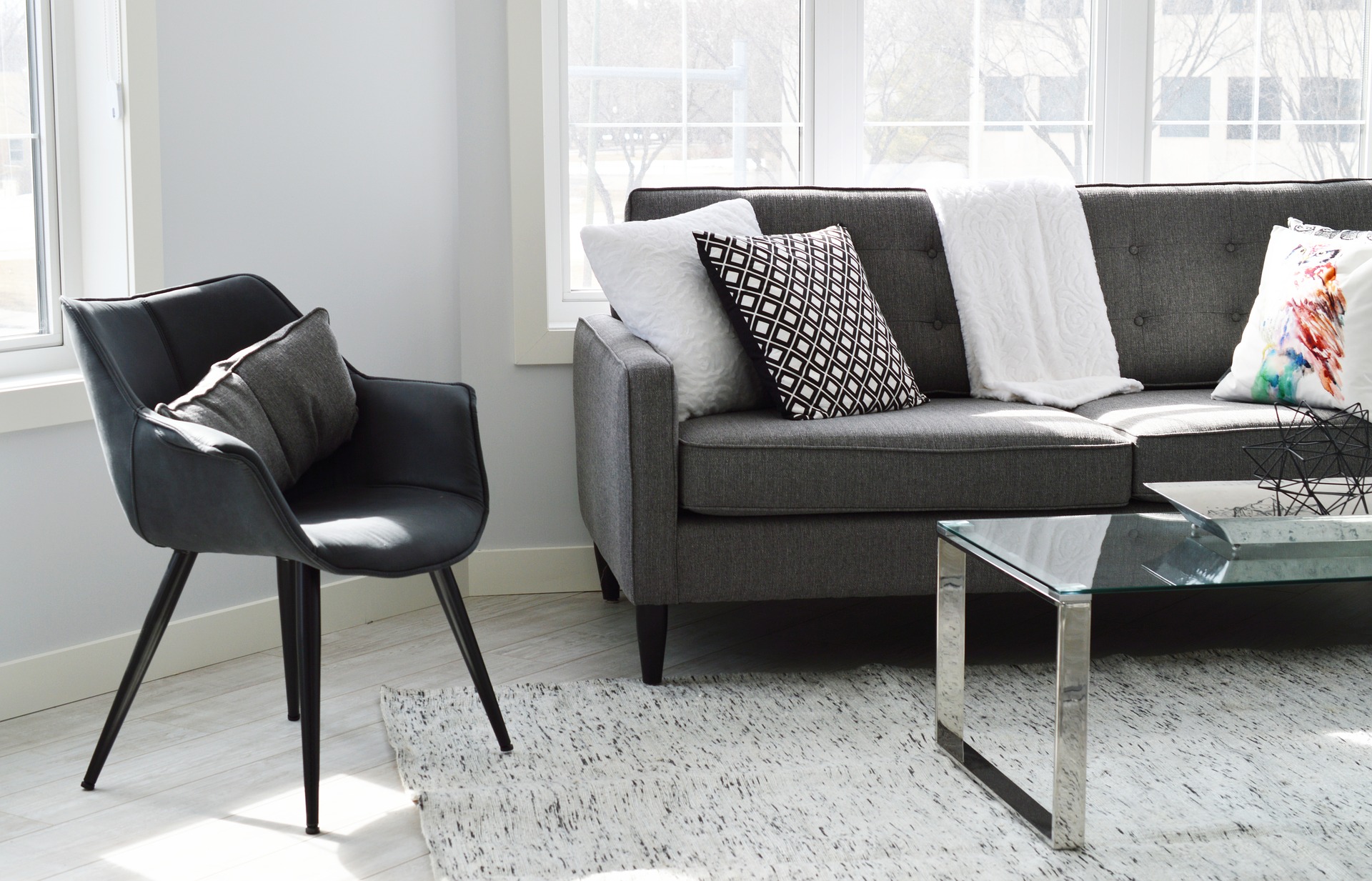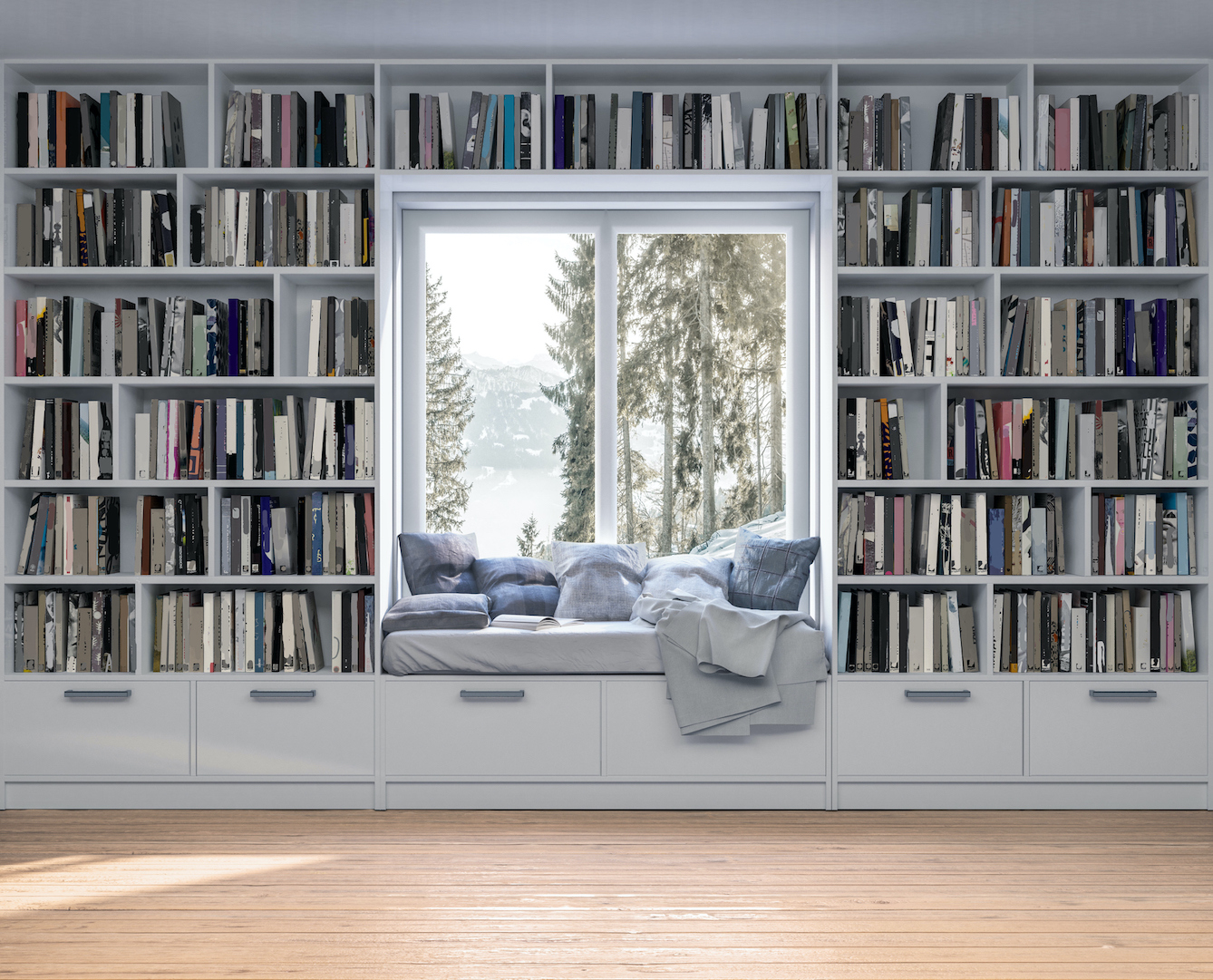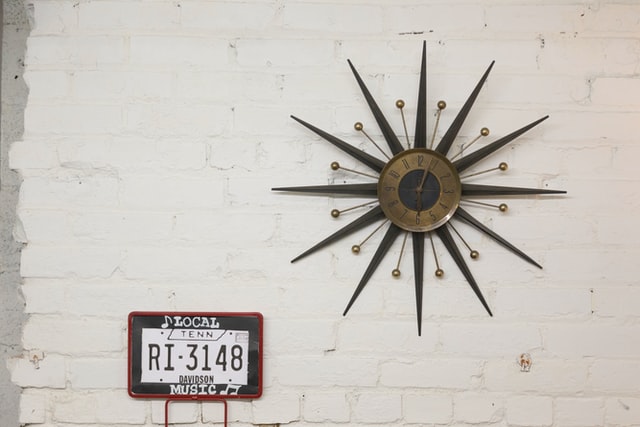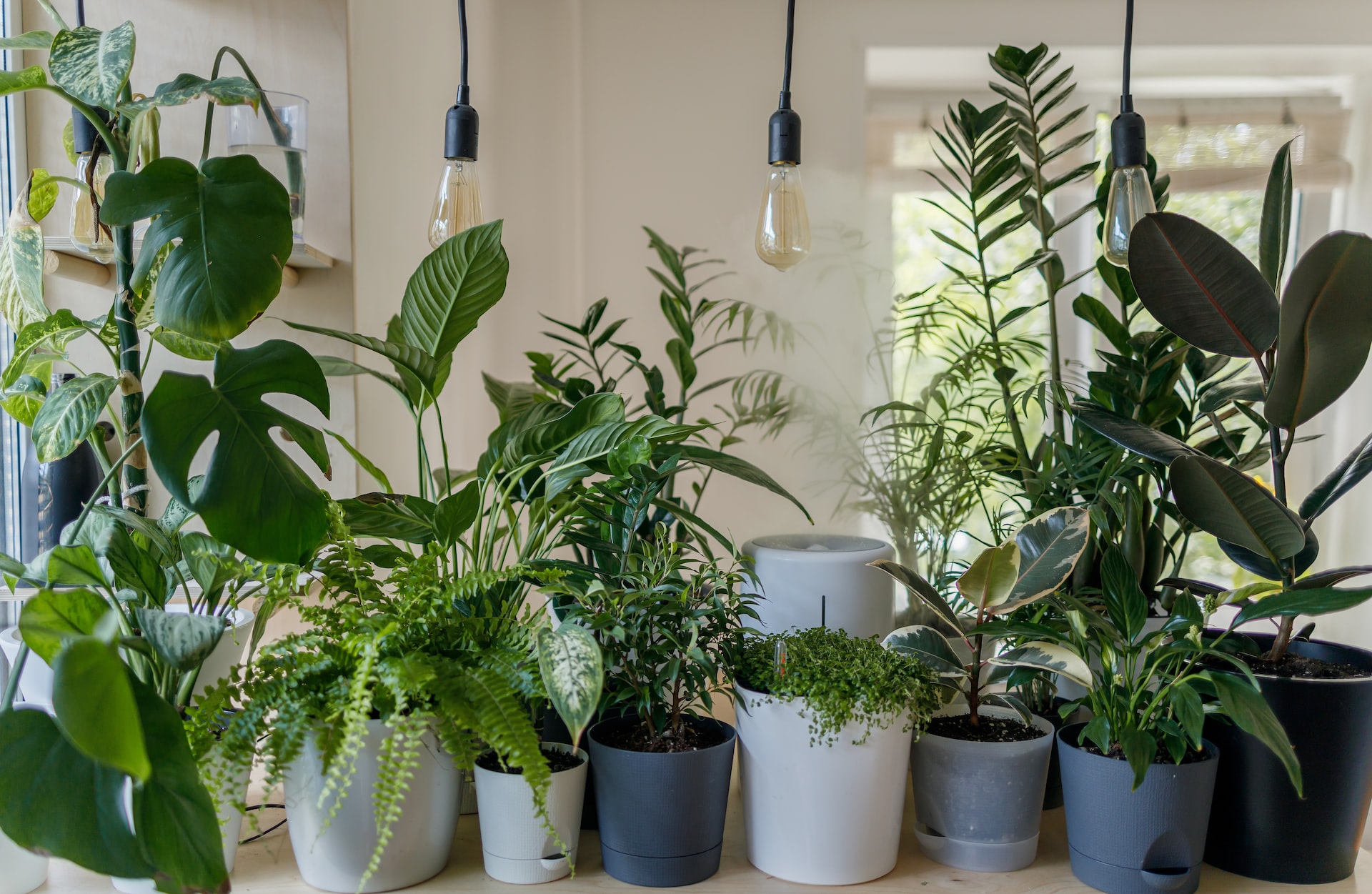A gallery wall and beautiful artwork fill up an empty room and will bring warmth, color, and personality to your home. There are many ways you can prepare your home art gallery to create a beautiful space you’ll love. Whether you enjoy paintings, sculptures, or various artwork mediums, this guide will show you some helpful tips on designing the best gallery at home. Read on to discover how to prepare your space and fill it with a range of artwork that is meaningful to you.
Preparing your walls for an art display
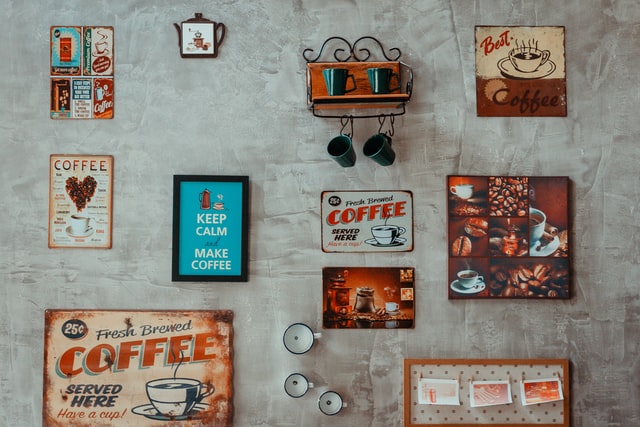
Before you design a gallery wall, it’s important to prep space so that the artwork is enhanced and in focus. Here’s how to prep the walls for your art display.
Choose the most suitable wall color. Ideally, your walls should be fairly light, or at least a neutral color. The lighter tone will help keep the eyes focused on the artwork and won’t allow it to “fade” into the background. A neutral color also makes it easier to add a variety of art since you won’t have to worry about different colors clashing. Light gray and shades of creamy ivory are good examples that will make your artwork stand out. These lighter colors also make it much easier to change artwork later as your tastes or pieces change over time. For neon colors or black and white photos, deeper and darker wall paint is ideal.
Choose a material or pattern for the walls. If you’d rather have some texture on your walls, consider adding a brick or tile veneer. Tile and brick add visual depth and bold texture, and they can make any room look more visually interesting. Wood planks are also a beautiful choice. It’s easier to hang artwork on wood walls than it is on brick or stone, so keep that in mind when deciding on a pattern or material to add. A playfully patterned wallpaper is another fun option that can add whimsy and color to the gallery room.
Choosing the right lighting
Lighting has a major impact on a room, so choose your art gallery lighting wisely.
Choose bright but soft lighting. Your gallery lighting should be bright enough to see the art easily, but not too heavy that it’s overwhelming and drowns out the details. Soft, warm light is best in a gallery room. If you want to display collectibles like coins and statuary, be sure to place them where your guests can clearly see them close up.
Be aware of sunlight. Paintings and other fine art can become severely damaged if exposed to direct sunlight. If your gallery room has lots of windows, make sure you use light-blocking window treatments to keep your art protected.
Matching furniture to the art in your gallery

You’ll want to choose beautiful, functional furniture for your gallery to make the space inviting and welcoming.
Match furniture with tones of art. Your artwork and furniture don’t have to match perfectly, but they should be somewhat close. Solid colors on fabric upholstery will give everything a cohesive look. Leather is another excellent option that gives the gallery a warm, sophisticated vibe and it easily pairs with just about any style, colorway, and design.
Choose comfortable furniture. Make sure you select comfortable sofas and chairs so your guests can sit down and relax as they take in the beauty of your artwork.
Add a table. Consider adding a small end table or coffee table if you want to serve refreshments like coffee, water, and snacks. A slender console table is a perfect snack table. Make it accommodating so your guests can socialize and enjoy some food and beverages while viewing your art gallery.
Different types of art you can display
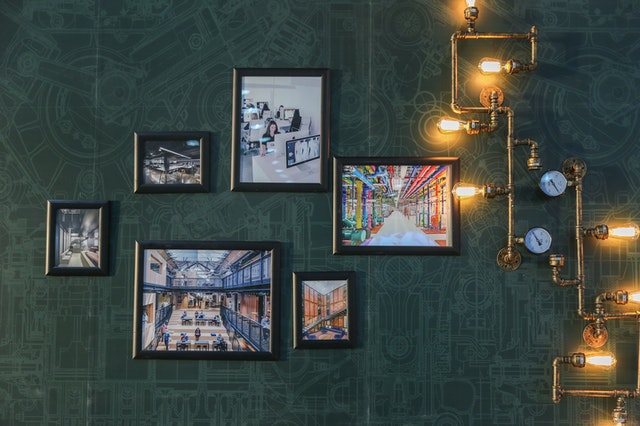
When you plan out your art gallery, think thematically and arrange pieces in groups by color, type of art, or in chronological order from when each piece was created. Here a few examples of the different types of art you can display in the gallery.
Sculptures. Sculptures can be made of solid stone like granite or marble or from clay, ceramic, and other mediums. You’ll find sculptures in themes ranging from abstract shapes to humans or animals. Display a sculpture on a sturdy table or in a cabinet, then highlight them with downward-facing lights that directly spotlight each one for a vibrant, artistic display.
Photography. Whether it’s a beautiful landscape, a panoramic acrylic print, or an intimate portrait, photography is a perfect addition to any gallery. Make sure you display your photo in a sturdy frame so that it’s protected and looks attractive when placed on your gallery wall. Several photos displayed together in a similar theme create a beautifully artistic look in any room. Also, make sure you have the perfect picture lights.
Paintings. There’s nothing more artful than original paintings, and they’re the most popular choice for an at-home gallery. Choose canvas prints that come in a frame for a professional look. Learn how to frame art on paper and on canvas. Your paintings can be featured in any theme from classic art to modernist and more. Make sure that every painting is displayed out of direct sunlight to protect them from fading or damage.
Here is a great resource for choosing art for your home like a pro. Once you’re ready to make your selection, explore unique paintings on places like Singulart where you’ll find talented artists from all over the world.
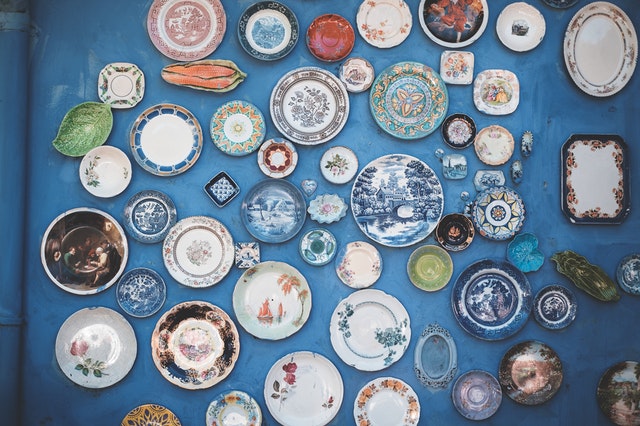
Collectibles. From coins to vintage toys, displaying your favorite collectibles is a fun choice for a gallery room. Place the collectibles in a cabinet with downlights and glass doors so that they’re easy to see but protected from dust and dirt. You can also showcase your favorite collectibles on wall shelving installed around the room. Accent the shelving with track lighting so each collectible is easy to see.
Pieces from important life events. Whether it’s a historical artifact or a personal souvenir, display some unique items that hallmark important moments in life and history. You can look for rare pieces at auctions or antique stores, or simply show off some of the items you’ve collected during travels or from other momentous life events.
Consider making your own art collection
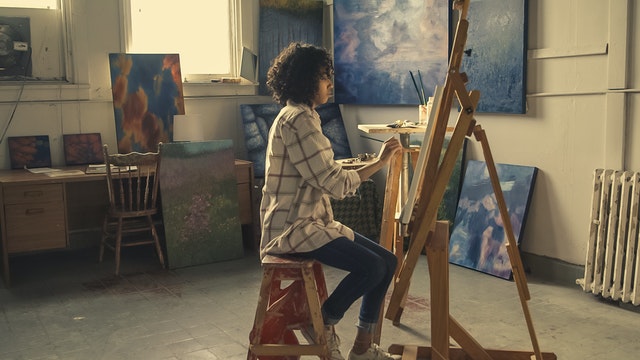
Your art gallery doesn’t have to include pieces made by someone else. Designing your own personal collection of art that you’ve created is a great way to show others your skills and talents.
Where to get started. Choose a part of your home that you can use for a quiet art studio where you can get creative. Take an art or photography class if you’re interested in filling your home with custom art created by you. Shop your local arts and crafts store for brushes, paints, and canvas. You can even try your hand at sculptures, crafts, or any other DIY hobby or form of art. The key is to find a medium that you’re passionate about so that you’re excited and thrilled to share the final results with others.
Benefits of your own art collection. Not only is making art a fulfilling experience, but it’s a great way to show other people your talent and skills. As your skills develop, you may even be able to design a gallery at home and sell your artwork to others.
How to distribute and organize your art
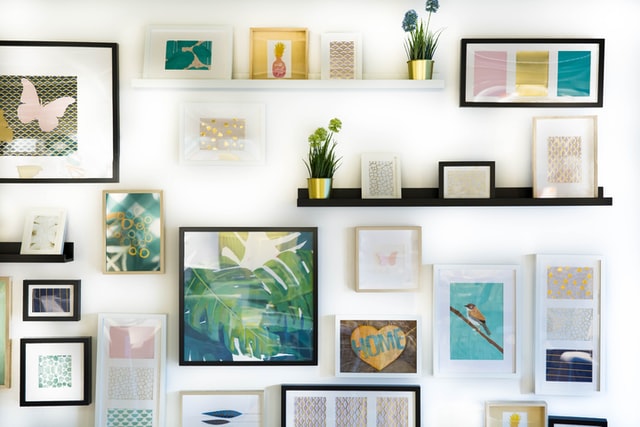
Once you’ve amassed a decent art collection, it’s time to display and organize it in your gallery. Here are some tips to help you display and hang your art correctly.
Hang your art at eye level unless your ceilings are low or you’re quite tall. You can start by hanging a few pieces at eye level, then work your way, hanging more above it or below it, depending on the height of the room and the layout of your furniture.
Treat your art collection as one piece if you have items that are to be grouped together. Section each collection off so that they’re hung in groups that make sense of how a gallery is displayed in a museum.
Use quality hanging hardware and make sure that each item is completely level once it’s affixed to the wall.
Frames do not need to match, but they can create a seamless look if you’re aiming for a clean, crisp, and modern aesthetic.
Display sculptures on sturdy tables, preferably in the corners of the room or in cabinets against the wall to prevent them from getting knocked over.
Hang your art approximately eight to ten inches above the furniture.
Create description cards for each piece. Every work of art or photograph has a story to tell, and a description card can give a brief story or history of the art that gives some background about the piece. Here’s some information to include in your description cards.
- The title of the painting or sculpture
- The artist’s name
- The date that the art was created
- The history of the piece
- Any back story behind the art you find interesting, including how you acquired it.
Art doesn’t have to just live in a museum only. By creating your very own art gallery at home, you’ll have a beautiful space that’s also a wonderful conversation starting point for family gatherings, house parties, and other special moments. Make your art gallery a place where you can relax and the end of a long day. Always leave some extra room for expansion so you can add more art and other unique items from important life events as time goes on.

